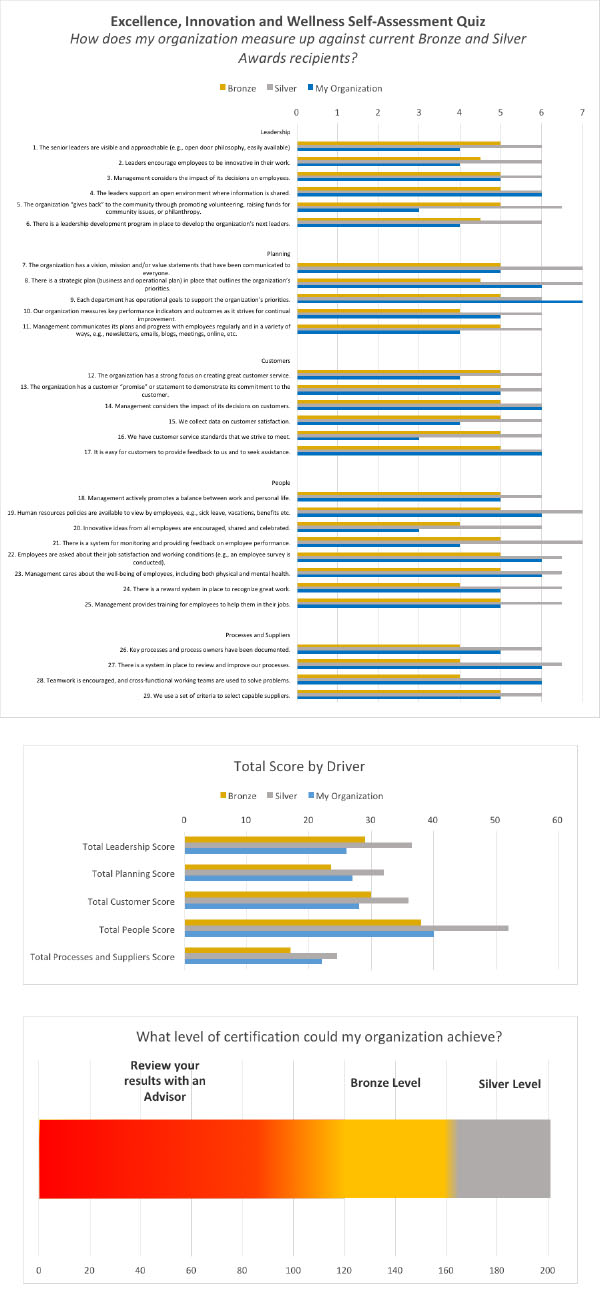Written by: Dr. Hugh Drouin and Dr. Adam Stoehr
r”]
The Excellence Canada ‘Thought Leaders Round Table’ met this month to discuss what community building is, why it’s important, and how to build it to unlock the potential in your organization. This article will explore the findings of the discussion.
What is Community Building in the Workplace?
Building community is about the creation of a regenerative workplace culture where the heart, mind, and soul of the worker thrive. It releases a spirit of innovation by creating places of belonging, safety, creativity, meaning, joy, and fulfilment. Community is a workplace climate where human relationships are honored above all else. Community is a place where the whole person is valued (Drouin, 2014). The benefits of a strong workplace community are listed in Table 1. Generally, the community is much stronger than the individuals within the community. There is not a chair for every leader, but a leader in every chair. Rudyard Kipling said it well in the Jungle book “For the strength of the Pack is the Wolf, and the strength of the Wolf is the Pack.”
|
Table 1: Benefits of a Strong Community in the Workplace |
|
Communities in the workplace leave a different kind of leadership legacy. It’s a legacy focused much more on the collective than the individual, including the idea that people have grown because of you. You will not have just done a job, but you will have made a lasting impact on the world. Table 2 shows the legacy that is left by leadership with a community based culture.
| Table 2: Legacy from Community Based Culture |
|
There are 4 leadership principles required for community building in the workplace. When we build community in the workplace, there is a need to lead from the heart. In most organizations our heads are full, but our hearts are empty. Many people have more formal degrees and certifications than they know what to do with, and they still have an empty heart. We tend to be good at doing, but we are not good at being. For a leader to be effective in creating a culture of community they need to be vulnerable, connected, humble, and of service.
Vulnerability
- Be able and aware of your emotions
- Love doesn’t come by looking at each other, it comes by looking together in the same direction
- You never forget the people you cry with
Connection
- People crave connection (from birth)
- Presence makes a difference (even if its for a brief 2-5 mins check in)
- We need to talk to people on a regular basis
Humility
- You are not better than anyone
- We are all in this together, we just bring different skills
- We are always stronger together
Service
- Servant leadership
- Good listener
- Be of service
Why is Community Building in the Workplace Important?
In addition to the benefits noted in Table 1, there are many good reasons for community building in the workplace. Only 5% of workers around the world are inspired to work to their full potential. That means that 95% of workers feel like they have more to contribute. People are designed for purpose. People are made for community. Without purpose and community, we are missing out on potential. In most organizations we have good managers, good strategists, and good operators. What we lack are good culture builders. When we create environments in the workplace that allow people to flourish and thrive, our organizations benefit greatly. Skills are good, but skills are not enough, they are just potential. Potential is nothing unless you unlock it. The problem is that individuals are isolated from each other by position, title, years of service, and where they are on the organizational chart. They can be trapped in a hierarchy of function. People need other people to thrive and structure can make true authentic connections with each other difficult and connecting with the higher purpose of the organization nearly impossible. Table 3 lists the potential that is unlocked when you build a culture of community.
| Table 3: Potential that is unlocked with Community based culture |
|
In general, the focus on community building at work results in feeling appreciated and valued. Table 4 shows the outcomes of feeling more appreciated and valued at work.
| Table 4: Outcomes of Feeling Appreciated and Valued at Work |
|
How Can We Build Communities in the Workplace?
The challenge is how to create environments that allow people to flourish and make contributions at all levels. In many organizations, daily tasks can feel like you’re a kitten or a puppy chasing a laser pointer moving quickly on the floor. We can get focused on our own problems and projects, that we lose sight of the bigger picture and purpose. Some ideas on how to build communities in the workplace so that regardless of the daily challenges, we stay focused and grounded on the overall purpose are listed in Table 5.
| Table 5: How to Build Communities in the Workplace |
|
It is also helpful to increase your organizations awareness of strengths and gifts of individuals and teams in the workplace. Gather insights and feedback from employees and teams on strengths of each group. It is valuable to understand and share employee skills and aspirations. This will also help staff in the pursuit of goals and opportunities. Community building requires leaders at all levels to be more inspirational. Table 6 lists ways be become more inspirational as leaders.
| Table 6: Ways to be More Inspirational as Leaders |
|
Collaborative leadership was a strong theme that emerged from all the discussions on how to build communities in the workplace. The idea that people at all levels can and should be involved with leadership challenges and problem solving was important to community building. One idea that has been implemented with great success at the Region of Durham Social Services department, is something they call “Leadership Circles.”
Leadership circles and other similar collaborative leadership approaches are meant to create space for staff to come together from across the organization and learn about what it means to lead. Feeling more empowered and more confident in their own ability to influence change within their work areas. A community is developed. A community within which staff feel comfortable to reach out to one another and share ideas, share their experiences and together co-create new solutions to enhance their services.
At Durham Region Social Services, leadership circles meet once a month. Staff describe the experience as transformational. Participants are chosen from all over the organization. The idea is to connect all the highly skilled individuals, irrespective of position, title, or years of service. They place them in a safe supportive environment where anything and everything is possible. In these small groups,authentic relationships are formed, and leadership is defined through influence rather than where you stand on the organizational chart.
These collaborative leadership approaches give people a chance to connect with their peers and solve problems together. With enough of these groups,each and every person would eventually be connected to every other person. It creates a community of leadership with a focus on understanding the overall purpose of the organization and their impact on the world. Table 7 shows facts about Leadership Circles at Durham Region Social Services.
| Table 7: Facts about Leadership Circles at Durham Social Services |
|
These monthly meetings are meant to create time and space for community problem solving and strategy. The frequency of the meetings helps build comfort with each other. The resulting relationship with people across all the divisions/departments feel that it’s a way to connect the whole department by understanding what other people are dealing with in their workplace. Table 8 shows some outcomes of Leadership Circles at Durham Region Social Services.
| Table 8: Outcomes of Leadership Circles at Durham Social Services |
|
The Excellence Canada ‘Thought Leaders Round Table’ met this month to discuss what community building is, why it’s important, and how to build it to unlock the potential in your organization. This article explored the findings of the discussion. We understand that community building is about the creation of a regenerative workplace culture where the heart, mind, and soul of the people thrive. We know the many benefits of community building including a greater connection with the overall purpose, feeling more valued, and being able to contribute regardless of your role. We know how to build a community leadership approach by intentionally making time and space for staff to solve problems together. Your challenge is to create environments that allow people to flourish and make contributions at all levels.
